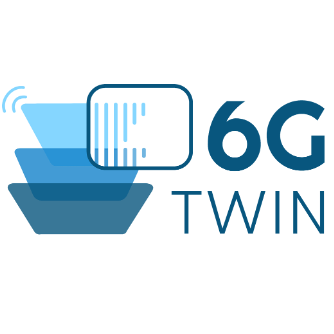
6G-TWIN
Integrating Network Digital Twinning into Future AI-based 6G Systems
Timeframe
1 January 2024 - 31 December 2026Institutions
- Luxembourg Institute of Science and Technology, LU (Coordinator)
- Chair of Networked Systems Modeling, TU Dresden, DE
- IMEC, BE
- VIAVI Solutions, IE
- Ubiwhere, PT
- Politecnico di Bari, IT
- Ericsson R&D, TR
- Accelleran, BE
- Université de Bourgogne, FR
- Research to Market Solution, FR
- Proximus, LU
Team @ TU Dresden
Funding
- SNS JU (Horizon Europe)
Description
The rapid integration of digital technology across industries like transportation and manufacturing has boosted the need for efficient communication and computing services. To meet this, innovative approaches for 6G architecture are crucial, aiming to go beyond current 5G capabilities.
European 6G roadmaps prioritize an AI-native management system for complex networks. These networks need to be sustainable, energy-efficient, and adaptable to various services and business models. Establishing a consistent unified communication and computing architecture requires unconventional methods, along with collaboration among standardization groups and industry leaders for practical market integration.
To achieve this, the 6G-TWIN consortium explores the concept of Network Digital Twinning (NDT) and its integration into future 6G systems. Creating a real-time digital replica of the physical network infrastructure (i.e., NDTs) means creating a sandbox in which it is possible to train models and test different scenarios before deploying them on physical network controllers. 6G will enable real-time interaction between physical networks and these digital copies, with the aim of optimizing various parameters, anticipating failures, improving energy efficiency and so on, thus paving the way for highly efficient and intelligent networks.
Contributions @ TU Dresden
Our group leads the work package on the design, architecture, and development of an open and secured simulator framework for machine-type simulation. We also support the process of designing the architecture and interfaces into and out of the simulator framework as well as a proof of concept study of 6G supported teleoperated driving.
About SNS JU
The European Smart Networks and Services JU (SNS JU) is a Joint Undertaking established in 2021 by the European Union Council Regulation No 2021/2085. This EU Partnership is jointly led by the EU Commission and the 6G Smart Networks and Services Industry Association (6G-IA). The mix of public and industry interest makes the Smart Network and Services Joint Undertaking the right platform for collaboration and the right instrument to foster world-class research and innovation on next generation networks and services. The SNS JU two-pillar approach, in support of 5G deployment and for advanced research of 6G systems, create a continuity for EU players but also provide tangible financial support to best research, SMEs and industry to strengthen the EU supply chain side. The SNS JU fosters alignment and synergies with Member States on 6G Research and Innovation Programs and favor international cooperation.
Selected Publications
-
Ion Turcanu, Sébastien Faye, Horst Fellner, German Castellanos, Julien Baudouin, Sidi-Mohammed Senouci, Mario Franke and Christoph Sommer, "Digital Twinning for 6G Teleoperated Driving: The 6G-TWIN Vision," Proceedings of IEEE European Conference on Networks and Communications (EuCNC 2024 & 6G Summit), Poster Session, Antwerpen, Belgium, June 2024. [BibTeX, PDF and Details...]
-
 Sebastién Faye, Miguel Camelo Botero, Jean-Sébastien Sottet, Christoph Sommer, Mario Franke, Julien Baudouin, German Castellanos, Régis Decorme, Maria Pia Fanti, Ramin Fuladi, Gunes Kesik, Beatriz Mendes, Chris Murphy, Stephen Parker, Simon Pryor, Sidi-Mohammed Senouci and Ion Turcanu, "Integrating Network Digital Twinning into Future AI-Based 6G Systems: The 6G-TWIN Vision," Proceedings of IEEE European Conference on Networks and Communications (EuCNC 2024 & 6G Summit), Antwerpen, Belgium, June 2024.
[DOI, BibTeX, PDF and Details...]
Sebastién Faye, Miguel Camelo Botero, Jean-Sébastien Sottet, Christoph Sommer, Mario Franke, Julien Baudouin, German Castellanos, Régis Decorme, Maria Pia Fanti, Ramin Fuladi, Gunes Kesik, Beatriz Mendes, Chris Murphy, Stephen Parker, Simon Pryor, Sidi-Mohammed Senouci and Ion Turcanu, "Integrating Network Digital Twinning into Future AI-Based 6G Systems: The 6G-TWIN Vision," Proceedings of IEEE European Conference on Networks and Communications (EuCNC 2024 & 6G Summit), Antwerpen, Belgium, June 2024.
[DOI, BibTeX, PDF and Details...]